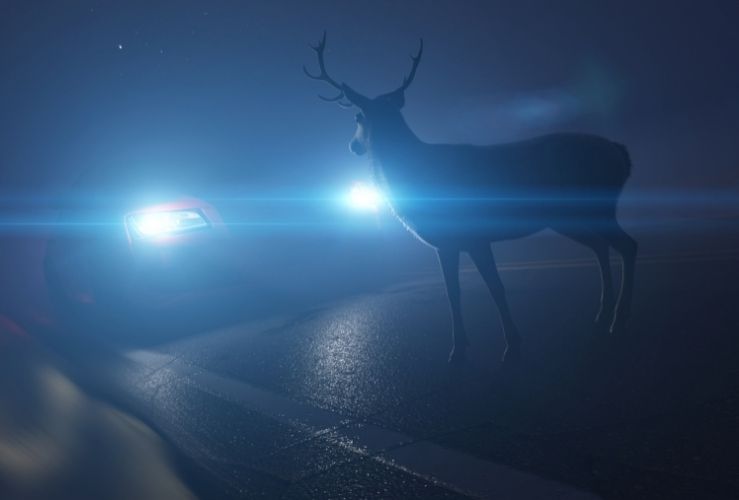Driving in the dark can be a daunting experience, especially for those who have limited experience or are new to the roads. There are certain tips and tricks that can help make the experience safer and less stressful.
First and foremost, it is important to slow down. Driving in the dark is inherently risky and, even with headlights, visibility can be limited. Decrease your speed and give yourself more time to react to any unexpected hazards.
It is also important to be extra attentive when driving in the dark. Pay close attention to the road and any potential hazards, such as animals, pedestrians, or other drivers. Make sure to keep your vision focused on the road ahead, and not the lights of oncoming traffic, as this can cause distraction and impair your ability to react quickly.
Finally, make sure your vehicle is equipped with the appropriate safety features. Replace any bulbs that are burnt out, and make sure all lights are functioning properly. This will not only make your drive more comfortable, but also help ensure you are seen by other drivers.
Driving in the dark can be a nerve-wracking experience. However, with the right preparation and safety measures, it can be a safe and enjoyable experience. Remember to slow down, remain attentive, and make sure your vehicle is equipped with the appropriate safety features. Doing so will help ensure you have a safe and pleasant journey.
Keep Your Distance:
Keeping your distance while driving is essential to staying safe on the roads. It’s a simple concept, but one that is often neglected by drivers who don’t understand the importance of maintaining a safe distance from the vehicles ahead.
The concept of keeping your distance while driving is based on the idea of “defensive driving”. This means that a driver should always be aware of what is going on around them and be prepared to react in order to avoid an accident. The most important aspect of defensive driving is maintaining a safe distance from the vehicles ahead.
Keeping a safe distance from the vehicle ahead of you helps to give you the time and space to react to any sudden changes in speed or direction. It also provides you with a clear view of the road ahead so you can anticipate any potential hazards.
When keeping your distance is important?
• When driving in wet or icy conditions
• When driving in unfamiliar areas
• When driving in heavy traffic
• When driving at night
• When following large vehicles
How to maintain a safe distance?
• Keep at least a two second gap between your car and the car in front of you.
• Increase the gap to four seconds when driving in wet or icy conditions.
• Increase the gap to six seconds when following a large vehicle.
• Make sure you can still see the car in front of you in your rear view mirror.
• Be prepared to slow down or increase your speed to maintain the gap.
Keeping your distance while driving is an essential part of staying safe on the roads. By following these simple tips, you can help to ensure that you and other drivers remain safe.
Adjusting Headlights:
Headlights are essential for safe driving at night, so it’s important to make sure they’re properly adjusted. Unfortunately, adjusting headlights in the dark can be a challenge. Here’s a step-by-step guide to help you get it right.
First, park your car in a level area at least 25 feet away from any walls or other objects. Make sure the engine is off and the headlights are on.
Next, use a screwdriver to loosen the screws that hold the headlight in place. Be careful not to over-tighten the screws.
Now, use a measuring tape to measure the distance between the ground and the center of the headlight. This will help you determine the correct angle for the light beam.
Next, adjust the angle of the headlight in increments of 1-2 degrees until you’ve achieved the desired angle. Make sure the light beam is aimed slightly downward, as this will help you see better in the dark.
Finally, use the screwdriver to tighten the screws and secure the headlight in place. Once you’re done, turn the headlights back on to see if the adjustment was successful.
Adjusting headlights in the dark can be tricky, but it’s an important task that should not be overlooked. Following this step-by-step guide will help ensure
 Buy Gifts Vouchers Here
Buy Gifts Vouchers Here Intensive Driving Courses
Intensive Driving Courses Driving Test Booking Services
Driving Test Booking Services




